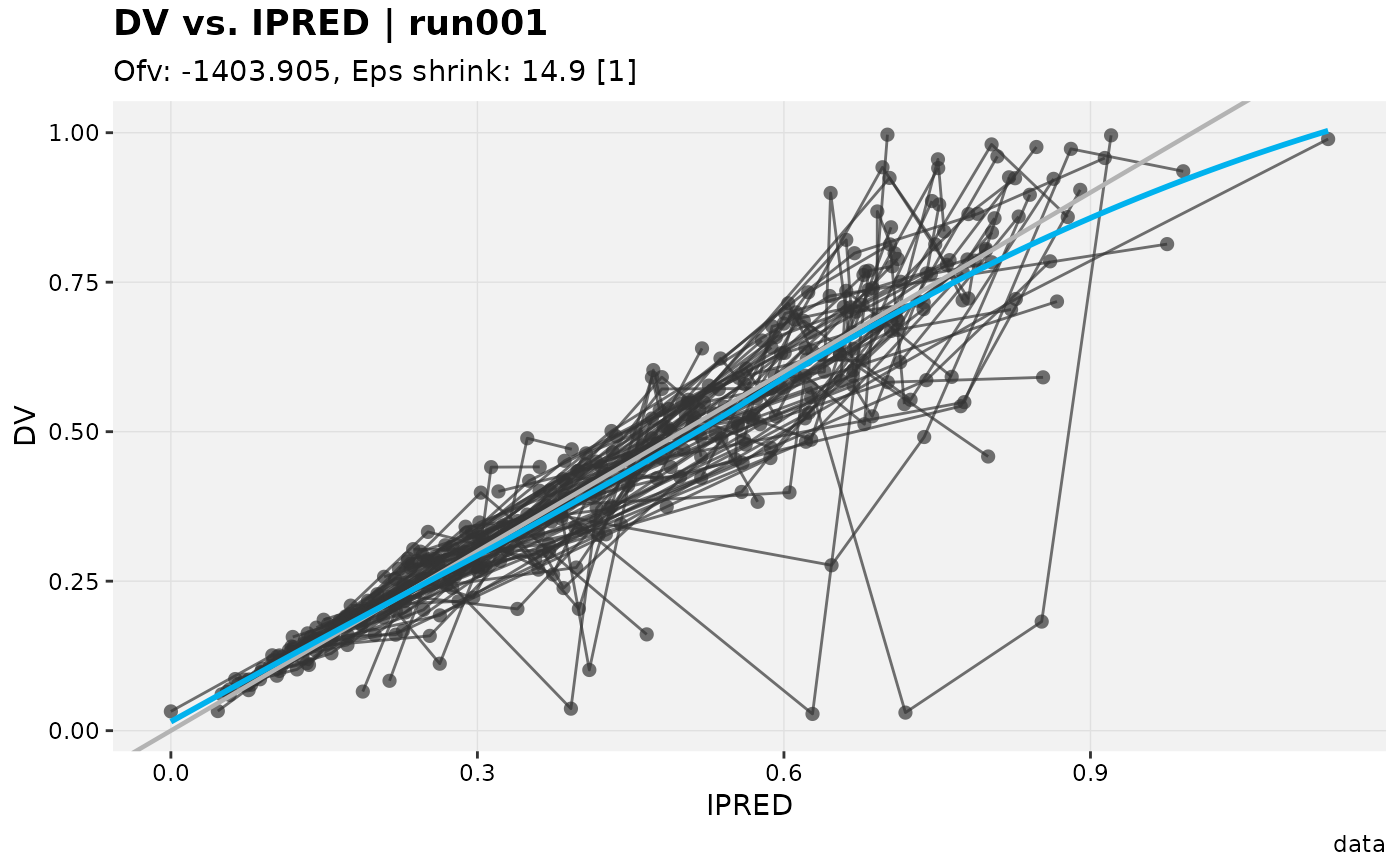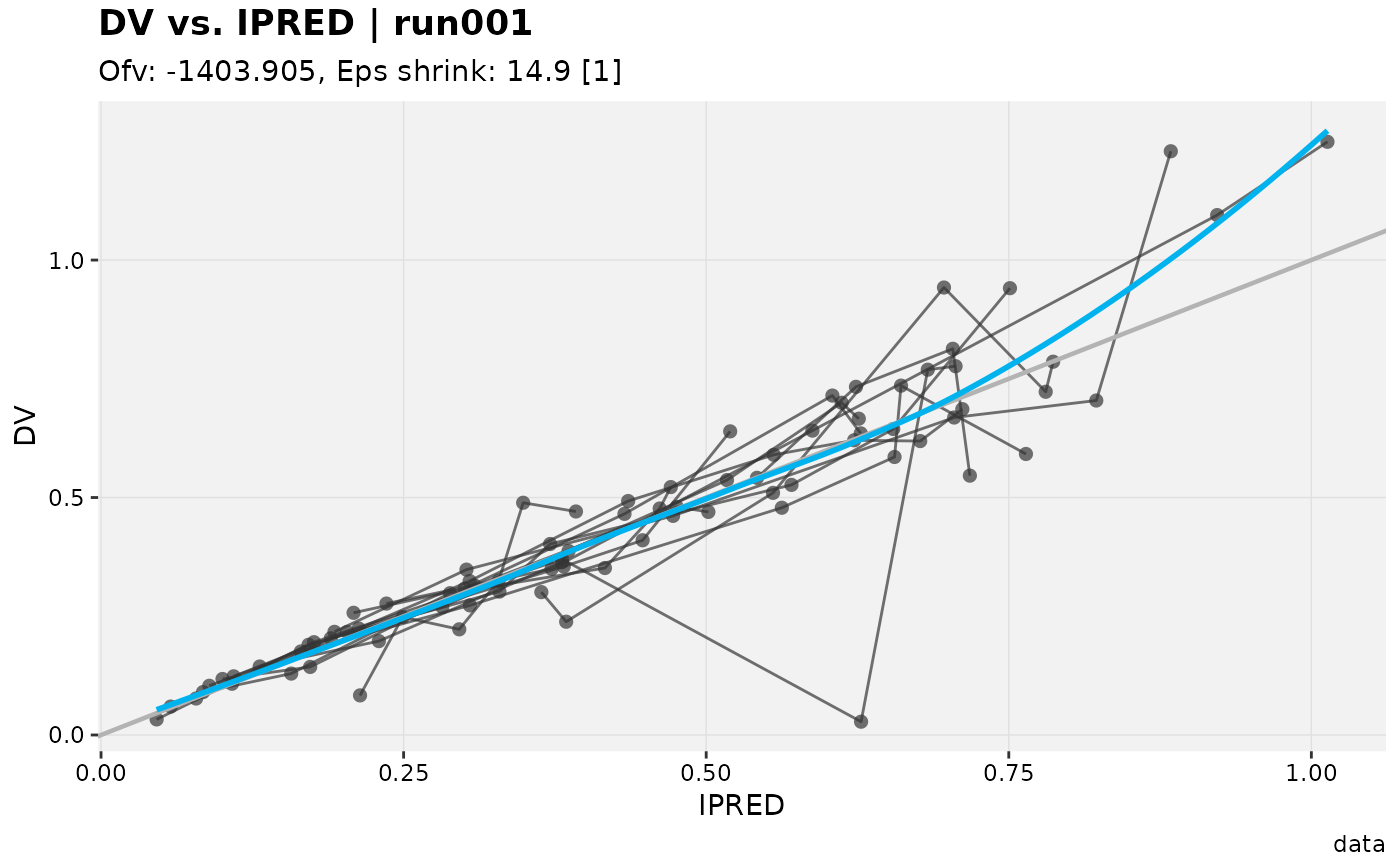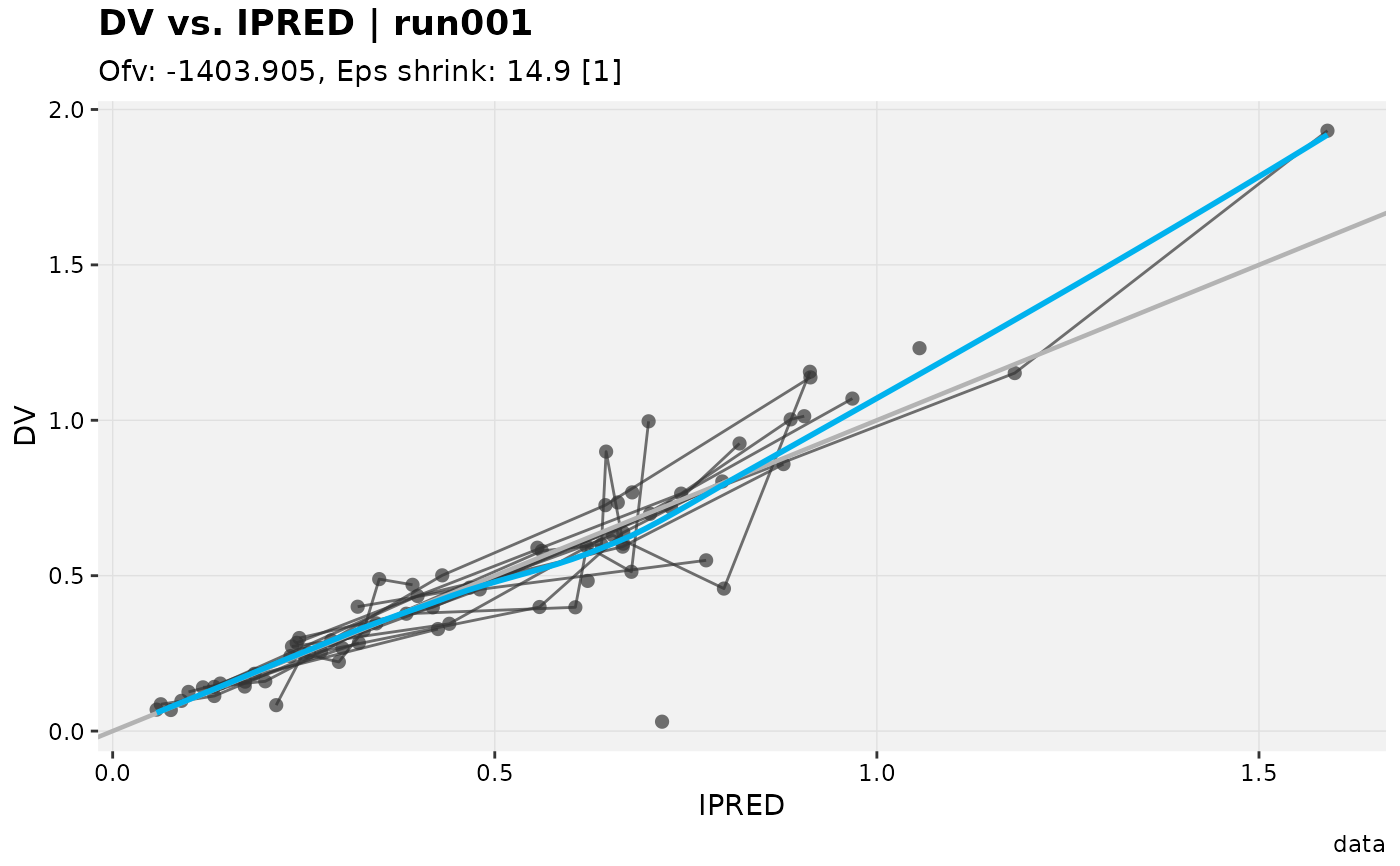Use filter() to select rows/cases where conditions are true.
Unlike base subsetting, rows where the condition evaluates to NA are dropped.
Use slice() to select row/cases by their position
Arguments
- .data
An xpose database object.
- ...
Name-value pairs of expressions. Use
NULLto drop a variable.These arguments are automatically quoted and evaluated in the context of the data frame. They support unquoting and splicing. See the dplyr vignette("programming") for an introduction to these concepts.
- .problem
The problem from which the data will be modified
- .source
The source of the data in the xpdb. Can either be 'data' or an output file extension e.g. 'phi'.
- .where
A vector of element names to be edited in special (e.g.
.where = c('vpc_dat', 'aggr_obs')with vpc).
Examples
# Subset by condition
xpdb_ex_pk %>%
filter(DV < 1, .problem = 1) %>%
dv_vs_ipred()
#> Using data from $prob no.1
#> Filtering data by EVID == 0
#> `geom_smooth()` using formula = 'y ~ x'
 # Subset by positions
xpdb_ex_pk %>%
slice(1:100, .problem = 1) %>%
dv_vs_ipred()
#> Using data from $prob no.1
#> Filtering data by EVID == 0
#> `geom_smooth()` using formula = 'y ~ x'
# Subset by positions
xpdb_ex_pk %>%
slice(1:100, .problem = 1) %>%
dv_vs_ipred()
#> Using data from $prob no.1
#> Filtering data by EVID == 0
#> `geom_smooth()` using formula = 'y ~ x'
 # Deduplicate rows
xpdb_ex_pk %>%
distinct(TIME, .problem = 1) %>%
dv_vs_ipred()
#> Using data from $prob no.1
#> Filtering data by EVID == 0
#> `geom_smooth()` using formula = 'y ~ x'
# Deduplicate rows
xpdb_ex_pk %>%
distinct(TIME, .problem = 1) %>%
dv_vs_ipred()
#> Using data from $prob no.1
#> Filtering data by EVID == 0
#> `geom_smooth()` using formula = 'y ~ x'
